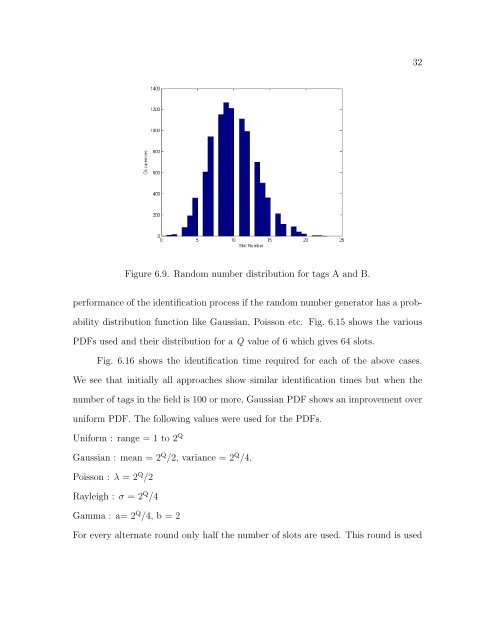utilizing physical layer information to improve rfid tag
utilizing physical layer information to improve rfid tag
utilizing physical layer information to improve rfid tag
Create successful ePaper yourself
Turn your PDF publications into a flip-book with our unique Google optimized e-Paper software.
Figure 6.9. Random number distribution for <strong>tag</strong>s A and B.<br />
performance of the identification process if the random number genera<strong>to</strong>r has a prob-<br />
ability distribution function like Gaussian, Poisson etc. Fig. 6.15 shows the various<br />
PDFs used and their distribution for a Q value of 6 which gives 64 slots.<br />
Fig. 6.16 shows the identification time required for each of the above cases.<br />
We see that initially all approaches show similar identification times but when the<br />
number of <strong>tag</strong>s in the field is 100 or more, Gaussian PDF shows an <strong>improve</strong>ment over<br />
uniform PDF. The following values were used for the PDFs.<br />
Uniform : range = 1 <strong>to</strong> 2 Q<br />
Gaussian : mean = 2 Q /2, variance = 2 Q /4.<br />
Poisson : λ = 2 Q /2<br />
Rayleigh : σ = 2 Q /4<br />
Gamma : a= 2 Q /4, b = 2<br />
For every alternate round only half the number of slots are used. This round is used<br />
32
















